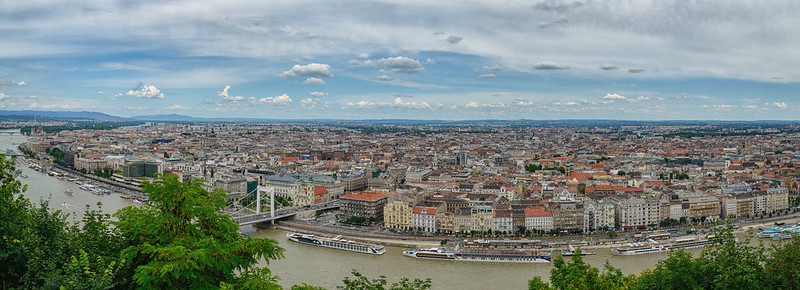From the Old Stone Age to the 21st Century
Budapest, the vibrant capital of Hungary, carries a history as rich as its thermal baths and as vibrant as its lively café scene. As a city formed over millennia, it has been home to various cultures, each of which has left a lasting imprint on its architecture, customs, and the city’s soul. Let’s journey through Budapest’s history, from ancient settlements to modern times.
Ancient Times
Budapest’s history can be traced back to the Old Stone Age, with signs of settlements dating back to the second millennium BC found on both sides of the Danube. The region witnessed the influence of diverse cultures over the centuries, from Scythians and Celto-Illyrian tribes to the Romans, who built the fortified town of Aquincum—now Óbuda— in the Second Century BC.
The Middle Ages
The landscape changed significantly in the 5th century AD with the arrival of the Huns, led by King Attila. From the 6th to the 9th Century, the Avars occupied the area, followed by the Magyars led by Prince Árpád around 896, who later moved to the western hills for increased protection.
Stephen (István) I, King of Hungary, introduced Christianity and the Central European feudal model around the year 1000, contributing to rapid development. However, Mongols ravaged Buda and Pest in the mid-13th Century, resulting in the construction of the Castle of Buda, completed under King Béla IV.
Renaissance and Ottoman Rule
Buda became a royal town in 1347 with the expansion of the Castle of Buda into a Gothic-style palace. Under Matthias Corvinus in the 15th Century, the Royal Palace was further extended, making Buda a hub of Renaissance culture. However, this era ended with the victory of the Turks at Mohács in 1526, leading to 150 years of Ottoman rule with Buda as the seat of a Grand Vizier.
Habsburg Rule and Modern Times
Buda, Pest, and Óbuda were liberated from the Ottomans by Charles of Lorraine in 1686, marking the beginning of Habsburg rule. The reign of Empress Maria Theresa in the 18th Century brought an economic upsurge to Buda and Pest, largely due to an influx of German-speaking settlers.
The revolution of 1848-49 marked a significant political shift led by liberal nobles. The opening of the Chain Bridge in 1849 and the crowning of Emperor Franz Joseph I and Empress Elisabeth in 1867 paved the way for the formation of the Austro-Hungarian monarchy of the Danube.
The United City of Budapest
In 1872, the separate settlements of Pest, Buda, and Óbuda were united into one city—Budapest. Rapid growth ensued, marked by the Hungarian millennial celebrations in 1896 and the opening of continental Europe’s first underground railroad.
However, the World Wars punctuated the city’s prosperity, with Budapest enduring heavy damage, especially in the castle quarter. Post-war, Budapest was under strict Soviet control, leading to political unrest and the historic uprising of 1956, which was brutally suppressed.
Modern Budapest
The late 20th Century brought significant changes to Budapest, with much reconstruction, including the Elisabeth Bridge’s opening and the underground network’s extension. The collapse of the Iron Curtain in 1989 allowed Hungary, and Budapest, to step into a new era of political and social transformation.

Today, Budapest, home to two million inhabitants, is a testament to its varied past. It has given the world illustrious musicians like Béla Bartók and Zoltán Kodály, celebrated writers like Nobel Prize-winner Imre Kertész, and groundbreaking inventors like Kálmán Kandó and János Irinyi. As we walk through its historic streets, we walk through centuries of resilience, transformation, and relentless pursuit of progress.